Abstract
The fluorescence-activated cell sorter and a rosette-depletion technique were used to separate rat spleen lymphocytes and BCG-activated lymphocytes into subpopulations with and without the antigens defined by W3/13, W3/23 and OX8 monoclonal antibodies. The resultant populations were then tested for natural killer (NK) activity in a quantifiable 6 hr 51Cr release assay. The data establish that rat natural killer cells are heterogeneous with respect to their surface antigen expression and that subpopulations of rat NK cells express the OX8 and W3/13 defined antigens. However, rat NK cells do not express the antigen defined by W3/24 monoclonal antibody.
Full text
PDF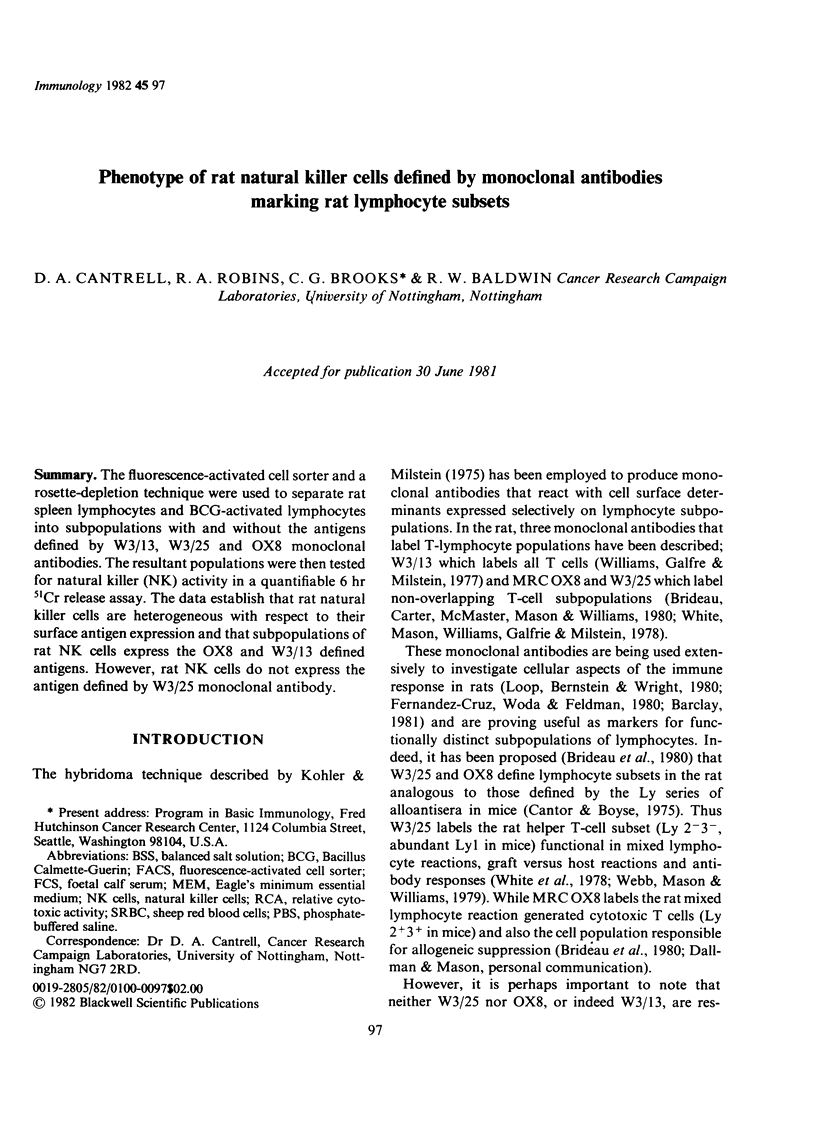
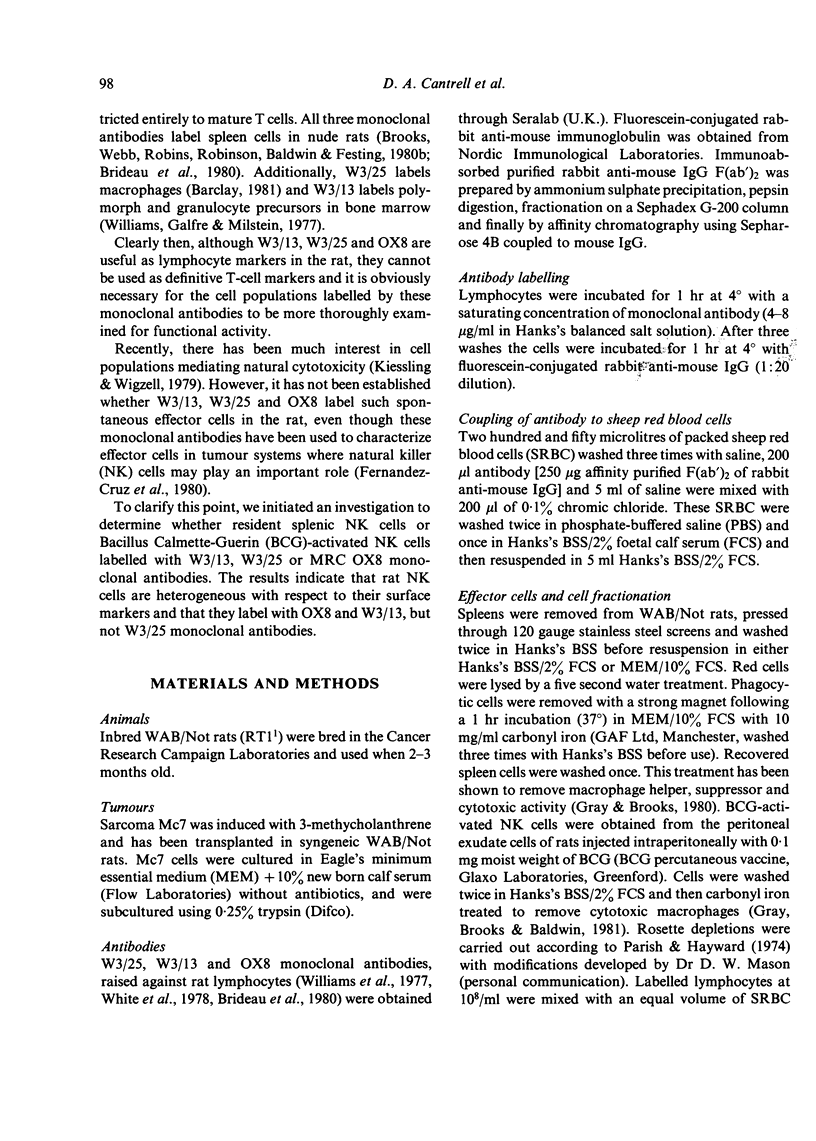
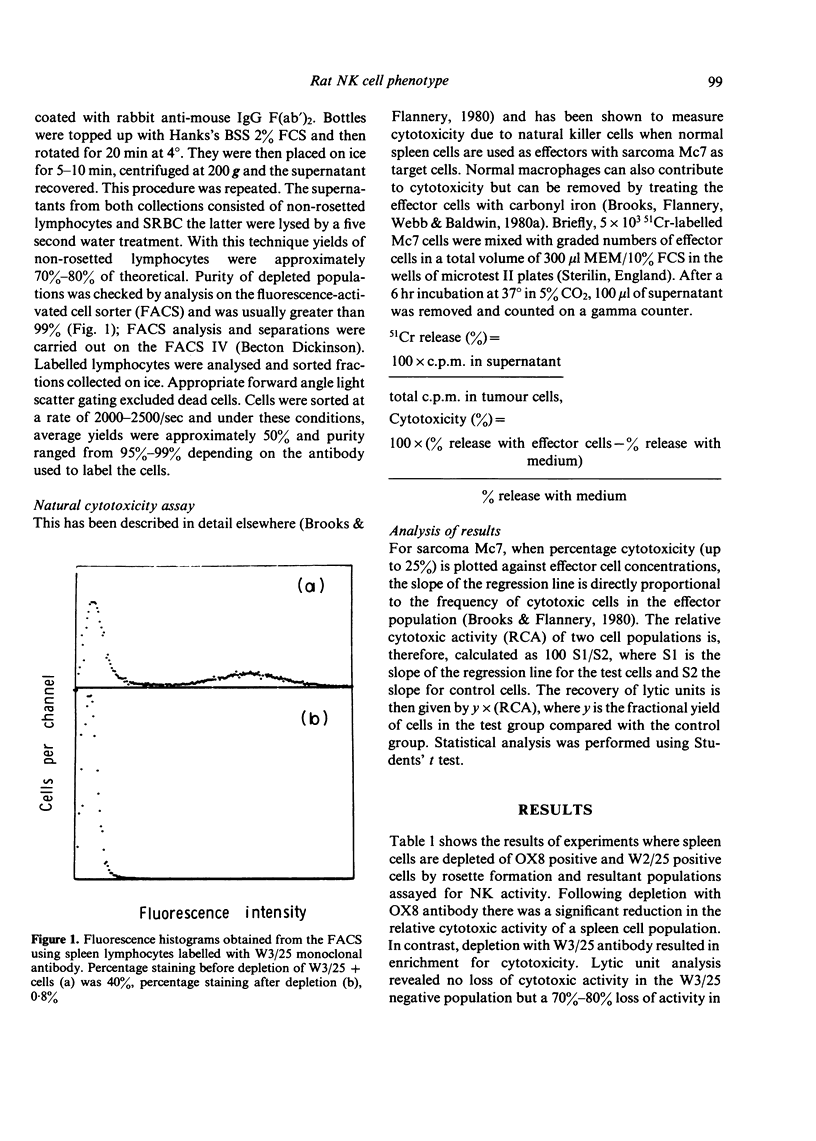
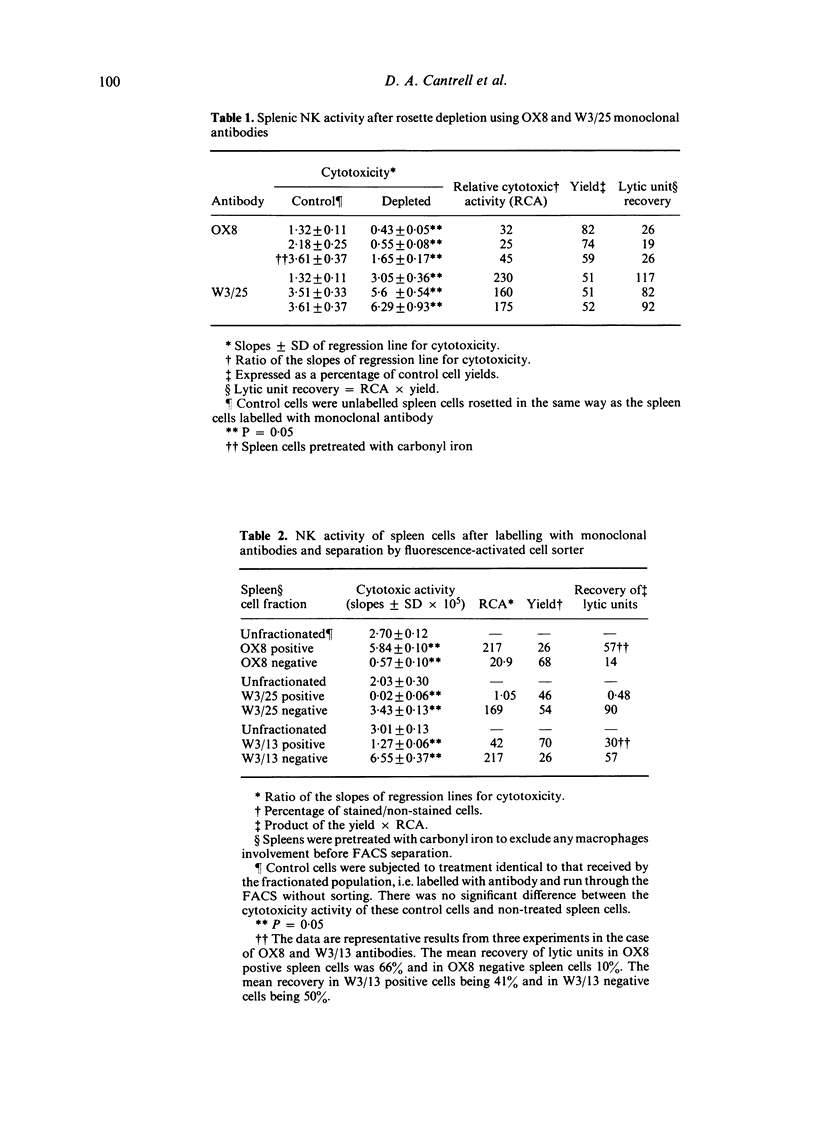
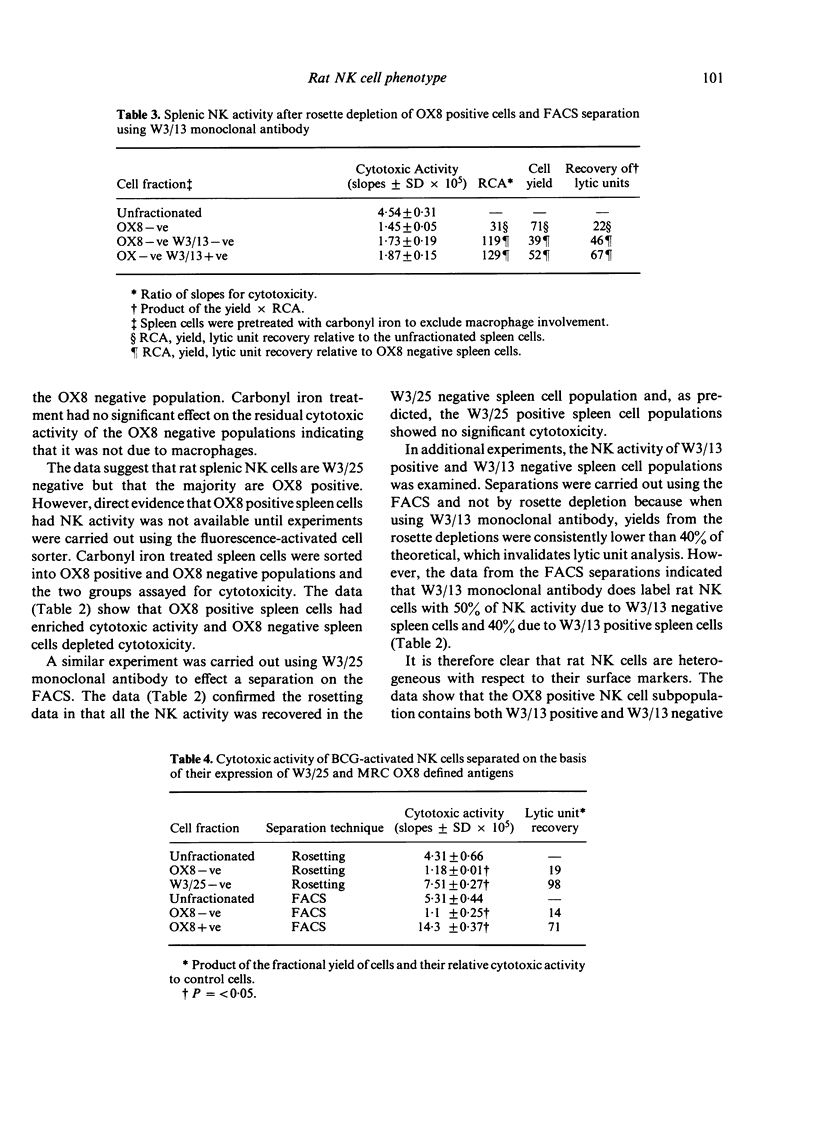
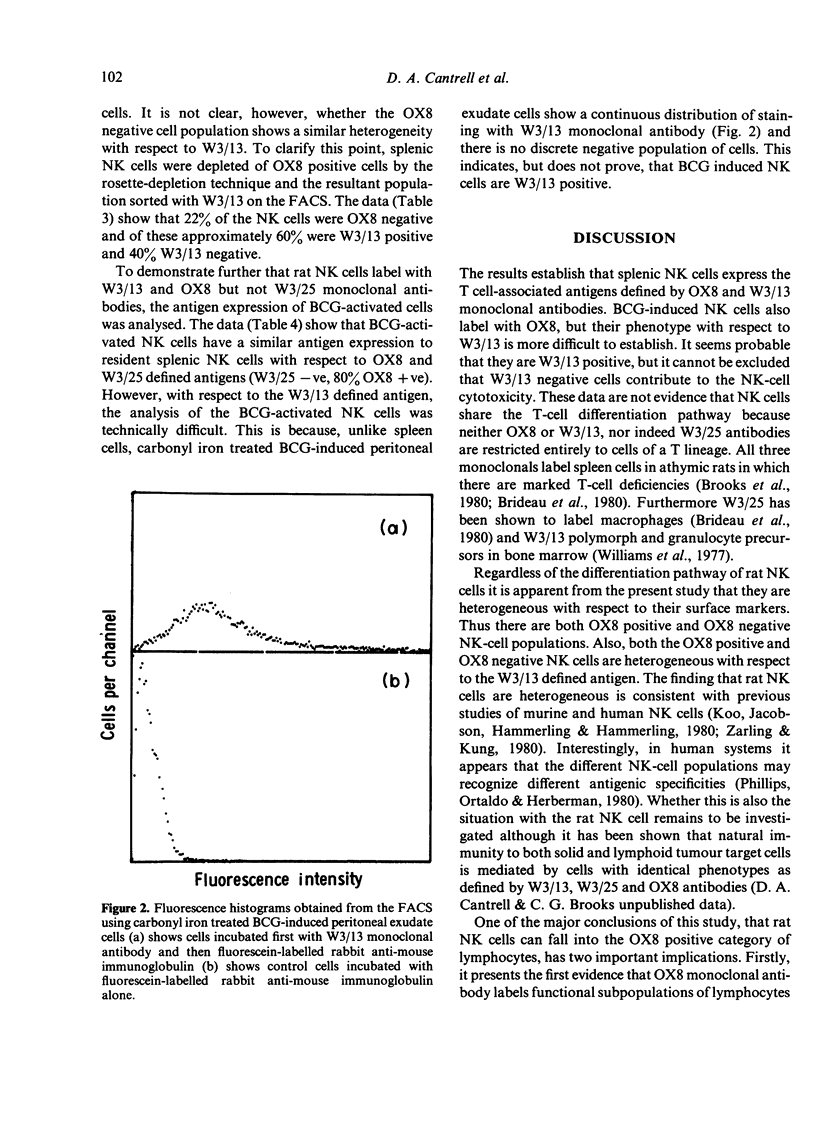
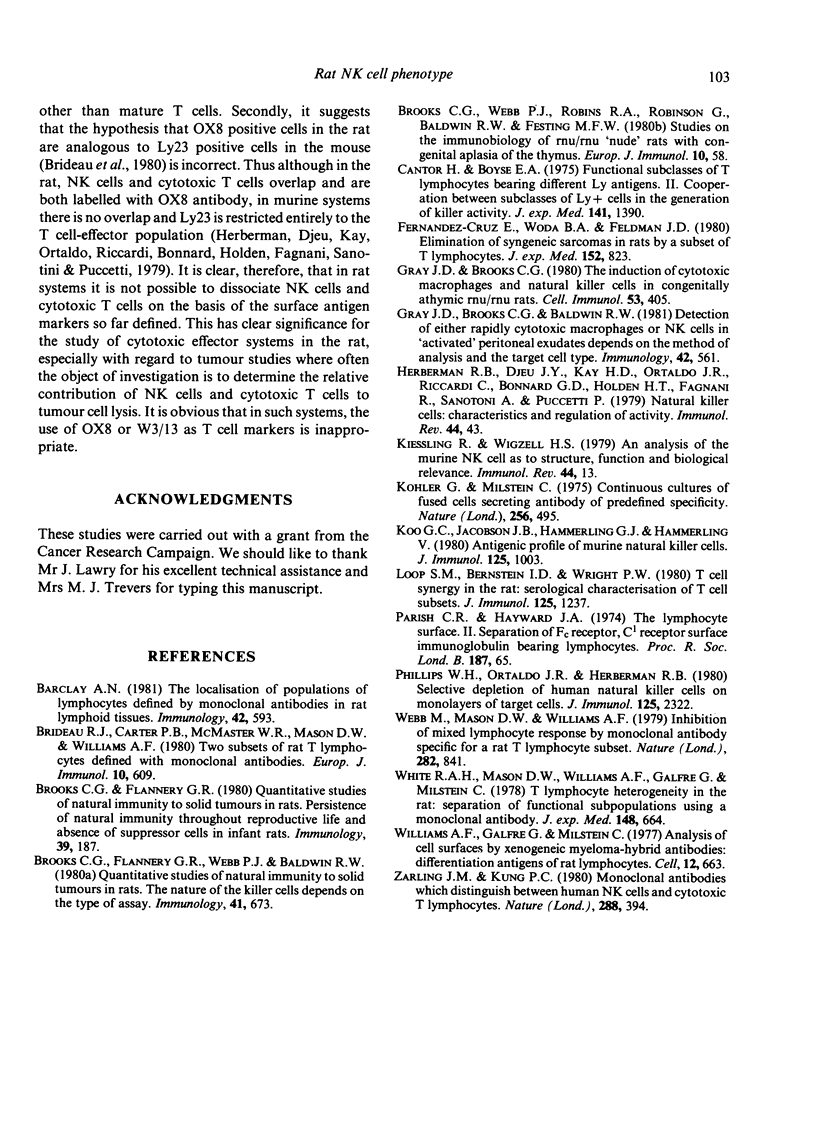
Selected References
These references are in PubMed. This may not be the complete list of references from this article.
- Barclay A. N. The localization of populations of lymphocytes defined by monoclonal antibodies in rat lymphoid tissues. Immunology. 1981 Apr;42(4):593–600. [PMC free article] [PubMed] [Google Scholar]
- Brideau R. J., Carter P. B., McMaster W. R., Mason D. W., Williams A. F. Two subsets of rat T lymphocytes defined with monoclonal antibodies. Eur J Immunol. 1980 Aug;10(8):609–615. doi: 10.1002/eji.1830100807. [DOI] [PubMed] [Google Scholar]
- Brooks C. G., Flannery G. R. Quantitative studies of natural immunity to solid tumours in rats. Persistence of natural immunity throughout reproductive life, and absence of suppressor cells in infant rats. Immunology. 1980 Feb;39(2):187–194. [PMC free article] [PubMed] [Google Scholar]
- Brooks C. G., Flannery G. R., Webb P. J., Baldwin R. W. Quantitative studies of natural immunity to solid tumours in rats. The nature of the killer cell depends on the type of assay. Immunology. 1980 Nov;41(3):673–680. [PMC free article] [PubMed] [Google Scholar]
- Brooks C. G., Webb P. J., Robins R. A., Robinson G., Baldwin R. W., Festing M. F. Studies on the immunobiology of rnu/rnu "nude" rats with congenital aplasia of the thymus. Eur J Immunol. 1980 Jan;10(1):58–65. doi: 10.1002/eji.1830100112. [DOI] [PubMed] [Google Scholar]
- Cantor H., Boyse E. A. Functional subclasses of T lymphocytes bearing different Ly antigens. II. Cooperation between subclasses of Ly+ cells in the generation of killer activity. J Exp Med. 1975 Jun 1;141(6):1390–1399. doi: 10.1084/jem.141.6.1390. [DOI] [PMC free article] [PubMed] [Google Scholar]
- Cudkowicz G., Hochman P. S. Do natural killer cells engage in regulated reactions against self to ensure homeostasis? Immunol Rev. 1979;44:13–41. doi: 10.1111/j.1600-065x.1979.tb00266.x. [DOI] [PubMed] [Google Scholar]
- Fernandez-Cruz E., Woda B. A., Feldman J. D. Elimination of syngeneic sarcomas in rats by a subset of T lymphocytes. J Exp Med. 1980 Oct 1;152(4):823–841. doi: 10.1084/jem.152.4.823. [DOI] [PMC free article] [PubMed] [Google Scholar]
- Gray J. D., Brooks C. G., Baldwin R. W. Detection of either rapidly cytolytic macrophages or NK cells in "activated" peritoneal exudates depends on the method of analysis and the target cell type. Immunology. 1981 Apr;42(4):561–568. [PMC free article] [PubMed] [Google Scholar]
- Gray J. D., Brooks C. G. The induction of cytotoxic macrophages and natural killer cells in congenitally athymic rnu/rnu rats. Cell Immunol. 1980 Aug 1;53(2):405–412. doi: 10.1016/0008-8749(80)90341-x. [DOI] [PubMed] [Google Scholar]
- Herberman R. B., Djeu J., Kay H. D., Ortaldo J. R., Riccardi C., Bonnard G. D., Holden H. T., Fagnani R., Santoni A., Puccetti P. Natural killer cells: characteristics and regulation of activity. Immunol Rev. 1979;44:43–70. doi: 10.1111/j.1600-065x.1979.tb00267.x. [DOI] [PubMed] [Google Scholar]
- Koo G. C., Jacobson J. B., Hammerling G. J., Hammerling U. Antigenic profile of murine natural killer cells. J Immunol. 1980 Sep;125(3):1003–1006. [PubMed] [Google Scholar]
- Köhler G., Milstein C. Continuous cultures of fused cells secreting antibody of predefined specificity. Nature. 1975 Aug 7;256(5517):495–497. doi: 10.1038/256495a0. [DOI] [PubMed] [Google Scholar]
- Loop S. M., Bernstein I. D., Wright P. W. T cell synergy in the rat: serologic characterization of T cell subsets. J Immunol. 1980 Sep;125(3):1237–1239. [PubMed] [Google Scholar]
- Phillips W. H., Ortaldo J. R., Herberman R. B. Selective depletion of human natural killer cells on monolayers of target cells. J Immunol. 1980 Nov;125(5):2322–2327. [PubMed] [Google Scholar]
- Webb M., Mason D. W., Williams A. F. Inhibition of mixed lymphocyte response by monoclonal antibody specific for a rat T lymphocyte subset. Nature. 1979 Dec 20;282(5741):841–843. doi: 10.1038/282841a0. [DOI] [PubMed] [Google Scholar]
- White R. A., Mason D. W., Williams A. F., Galfre G., Milstein C. T-lymphocyte heterogeneity in the rat: separation of functional subpopulations using a monoclonal antibody. J Exp Med. 1978 Sep 1;148(3):664–673. doi: 10.1084/jem.148.3.664. [DOI] [PMC free article] [PubMed] [Google Scholar]
- Williams A. F., Galfrè G., Milstein C. Analysis of cell surfaces by xenogeneic myeloma-hybrid antibodies: differentiation antigens of rat lymphocytes. Cell. 1977 Nov;12(3):663–673. doi: 10.1016/0092-8674(77)90266-5. [DOI] [PubMed] [Google Scholar]
- Zarling J. M., Kung P. C. Monoclonal antibodies which distinguish between human NK cells and cytotoxic T lymphocytes. Nature. 1980 Nov 27;288(5789):394–396. doi: 10.1038/288394a0. [DOI] [PubMed] [Google Scholar]


